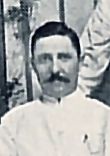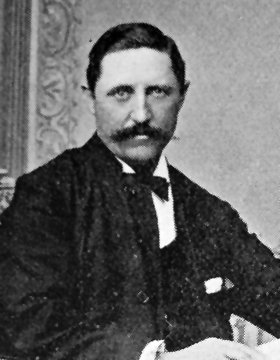View entry
Name: GRIFFITHS, John Bynner (Rev.)


Birth Date: 1 Jan 1865 Penybontfawr, Montgomeryshire, Wales
Death Date: 23 Nov 1932 Mazeras
Nationality: British
First Date: 1895
Last Date: 1932
Profession: Missionary - United Methodist Free Church Mission
Area: Mazeras, Rabai
Married: 1. In Mombasa 25.3.1897 Margaret E. Edwards of Bangor b. 11 Jan 1866 Bangor, d. 6 July 1899 Mazeras after childbirth; 2. On 12.5.1905 Alice Jane Madeley b. 1870
Children: dau (1899 - did she die?); son (24.1.1907 Mazeras); Ronald (23.4.1909 Nairobi)
Book Reference: Red 25, Red 31, Hut, North, Drumkey, Red 22, Land, Methodist Missionary Society, EAHB 1906, EAHB 1907, Witchmen, Leader14, Red Book 1912
General Information:
North - arr. Zanzibar 31/12/1894 for Golbanti Mission; Moved to Mazeras 1896, ill health; Ganjoni Dec 1897
Red 22 - Chief of Mission
Land - 1909 - John Griffiths - Agricultural, 93.096 acres, Mazeras, 31-12-06, Registered 22-5-09
Methodist Missionary Society - Letter from Archivist 30/5/73 - Obituary - J.B. Griffiths - born on January 1, 1865, at Penybontfawr, Montgomeryshire. As a worker in the fields he took his share in the maintenance of the home when but a few years old. Studying in his spare time and amid his toil, unable to speak anything but Welsh until he was 15 years of age, by sheer dogged persistence he won through. As a youth he worked in a quarry, and saved enough money to devote two years to preparation for the entrance examination to the Calvinistic Independent College, Bangor. In his 4 years' course he passed Inter. B.A. and studied theology. For 2 years he served as minister of the Adwy Clawd Congregational Church. Accepted for the East Africa Mission of the United Methodist Free Church, he was stationed at Golbanti, where for months he suffered from malaria every second week. Eventually he was sent down to Mombasa in such a condition that his life was despaired of. Only half-conscious he kept repeating: "I won't be sent home, I'm going to live for Africa." He did! For 36 years in the least healthy of our stations, with unfaltering devotion and silent heroism for which no tribute can ever be adequate, he sustained the burden of the East Africa Mission through every vicissitude. For the varied demands which work overseas makes upon a man he was supremely equipped. The buildings erected at Mazeras and Ribe, designed by himself and erected under his supervision, are a standing memorial to his practical gifts. In administration he exercised a paternal discipline, possessing that rare qualification for dealing with a primitive people - the authority of love. Unselfish to a degree, he pioneered the development of the Mission to the cool healthy highlands, himself remaining in the malarial coast region. He had great personal charm, a profound religious experience; and was almost painfully sensitive, incurably reticent, exquisitely shy. Retiring from active service in 1930, he passed his last days with the people whom he had loved with such devotion and served so richly till, on November 23, 1932, he entered into rest.
Witchmen - Methodist leaders also avidly wished for expansion. One of the most outspoken was John B. Griffiths, a minister with many years experience on the Kenya coast. A shy, intellectual Welshman, who had only learned English in his teens, Griffiths found himself inspired by the rapid conquest of Embu in 1906, followed by the bloodless surrender of Meru to E.B. Horne in 1907-8. On receiving the news, Griffiths first petitioned the colonial government to grant the whole Embu region to the Methodists as an exclusive religious sphere. The request was denied, initially because the government considered it unsafe. Griffiths then applied a second time, requesting that the comparatively "peaceful" Meru district be regarded as the exclusive sphere of the United Methodist church. In December 1909 the government agreed. Griffiths lost no time in staking out his claim, receiving both funds and permission from the United Methodist Council of England. In 1909 he walked, with one European companion and twenty-four Gikuyu porters, around the Eastern slope of Mount Kenya, travelling the 171 miles from Nairobi to Nyeri and on to Meru by footpaths that were often little more than traces in the bush.
Griffiths's party arrived at "Fort Meru" in October 1909, to be met by Horne. The district commissioner advised them against attempting to "penetrate deeper into the Meru country, which was still subject to the depredations and disturbances of young warrior bands," no doubt a reference to a band of former warriors with whom Horne had clashed as the year began. To ensure both social contact and military protection, Horne decided to allot the Methodists a plot of land less than two miles away from his administrative headquarters. Griffiths's subsequent report of this expedition electrified Methodist leaders back in London.
Describing Meru as a land of "hills, valleys, and innumerable streams," he found it "unlike any other area in Africa": 'Its hills are covered with ferns, hedges are thick with blackberry bushes, and in the streams watercress abounds …. [and] mosquitoes are unknown ……. We have been toiling for 50 years in the sweltering climate of the coast, contending with tremendous difficulties, bitter disappointments and deaths. We have been for years meditating upon seeking another and better country in which our men can live and labor and reap. SIR, HERE IT IS. THE FUTURE OF OUR EAST AFRICAN MISSION LIES HERE. I implore the committee to enter it." By 1910 London members of the United Methodist church had responded to Griffiths's glowing report with the decision to extend their mission into Meru. Efforts began immediately to recruit a missionary, carpenter and doctor to launch the project. The carpenter's position ("industrial missionary") was granted, in 1911, to Rev. Frank Mimmack. In January 1912 he and Griffiths left England to occupy the allotted site and begin construction of the first buildings. To search for a minister and doctor took longer, Griffiths having declined both positions in favor of returning to the Kenya coast. Eventually the posts were combined and awarded to Rev. Reginald Worthington.
Red Book 1912 - J. Griffiths - Mombasa
Gazette - 13/2/1924 - Electoral Register - Griffiths, John, Missionary, Mazeras
Gazette 2 Oct 1934 probate
EAS 29 Nov 1932 He had made one of his rare trips from his home at
Ndugu-ni-Mkone to Mombasa and on his return had a heart attack on Mazeras Station. He lay unconscious for a short while in the mission house, and then quietly passed away. It was in 1895 when Mr Griffiths was sent out by the United Methodist Free Church to devote his life to the cause of Christ in East Africa. In those early days he suffered great hardships. From the first he lived a lonely life. For while he himself was often stricken down with sickness he gradually gained an immunity which his colleagues never won. One after another they had to return home and he was left to hold the fort alone. He spent so much of his time alone that as he grew older he became nervous of companionship, and made a few friends. The Waduruma he learnt to read as an open book. He knew them better than they knew themselves and in spite of their failings and many weaknesses he loved them. They were his children, he was their father. There he was accepted and initiated as a Duruma chieftain and until the day of his death he was dealing with an almost endless series of cases. Apart from a short time spent at Golbante on the Tarna River, and two safaris to Meru when that station was opened up, his whole time was given to this district. When he retired three years ago, he went to live no further than two miles away from the scene of his labours. His funeral service held on Thursday was at Mazeras and a large number of Waduruma were present when the body was laid to rest beside that of the young wife who had been called home so many many years ago.
